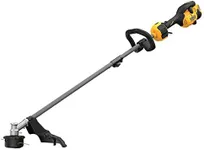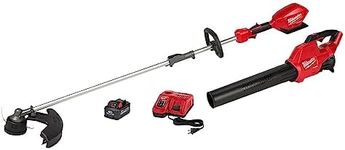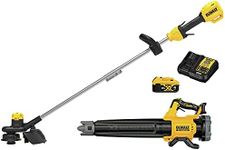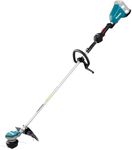Buying Guide for the Best Battery String Trimmers
Choosing a battery string trimmer can make yard work much easier and more convenient, especially if you want to avoid the hassle of gas engines or tangled cords. The right trimmer for you depends on the size of your yard, the type of grass and weeds you need to cut, and how comfortable you want the tool to be during use. By understanding the key features and how they relate to your needs, you can find a trimmer that keeps your lawn looking neat without extra effort.Battery VoltageBattery voltage tells you how powerful the trimmer is. Higher voltage usually means more cutting power, which is helpful for thicker grass or tougher weeds. Trimmers typically range from about 18V to 80V. Lower voltage models (18V-24V) are lighter and good for small yards with light grass. Mid-range (36V-40V) can handle medium-sized yards and some tougher weeds. High voltage (60V-80V) is best for large areas or very dense growth. Think about the type of work you need to do—if you have a small, tidy lawn, a lower voltage is fine, but for bigger or wilder spaces, go higher.
Battery Capacity (Ah)Battery capacity, measured in amp-hours (Ah), tells you how long the trimmer can run before needing a recharge. A higher number means longer run time. For quick touch-ups or small yards, a lower capacity (1.5Ah-2.5Ah) is usually enough. For larger yards or longer sessions, look for 4Ah or more. If you don’t want to stop and recharge often, or if you have a lot of trimming to do, a higher capacity battery is a good choice.
Cutting WidthCutting width is the size of the area the trimmer can cut in one pass, usually measured in inches. A wider cutting width (14-16 inches) lets you finish faster, which is great for big yards. Narrower widths (10-12 inches) are easier to control and better for tight spaces or detailed work. If you have a lot of open space, go wider; if you need to trim around flower beds or fences, a smaller width might be easier to handle.
WeightThe weight of the trimmer affects how comfortable it is to use, especially for longer periods. Lighter trimmers are easier to carry and maneuver, making them a good choice for smaller people or anyone who wants less strain. Heavier models may have more power but can be tiring to use. Think about how long you’ll be using the trimmer and how much weight you’re comfortable holding.
Line Feed SystemThe line feed system controls how the cutting line is released as it wears down. There are manual, bump feed, and automatic feed systems. Manual systems require you to stop and adjust the line yourself. Bump feed lets you tap the trimmer head on the ground to release more line, which is convenient and quick. Automatic feed systems release line as needed without you doing anything. If you want the least hassle, automatic is best, but bump feed offers a good balance of control and convenience.
Adjustable Shaft and HandleAn adjustable shaft or handle lets you change the length or angle of the trimmer to fit your height and reach. This makes the trimmer more comfortable and helps you get to hard-to-reach spots. If you’re taller or shorter than average, or if more than one person will use the trimmer, look for adjustable features to make the tool fit you better.
Noise LevelBattery string trimmers are generally quieter than gas models, but some are still louder than others. If you live in a quiet neighborhood or want to avoid disturbing others, check the noise level. Quieter models are more pleasant to use, especially for longer sessions or early in the morning.


















